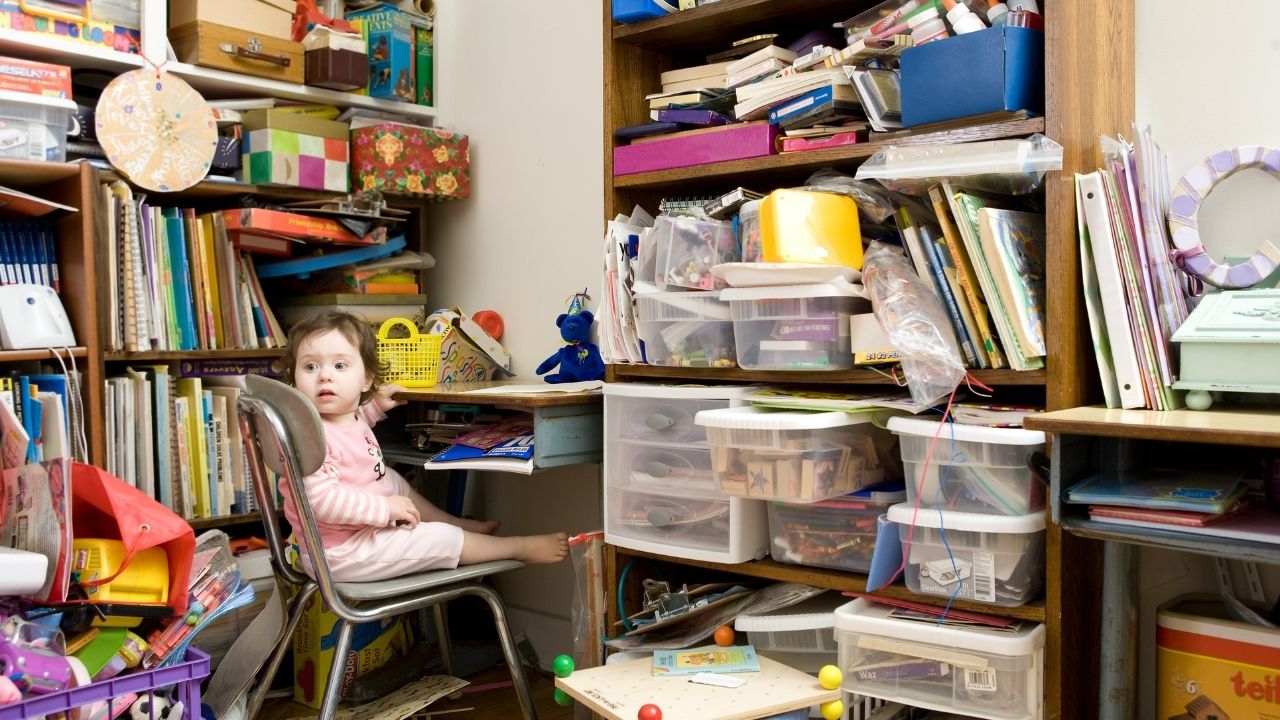Lifestyle
How to Minimize the Accumulation of Clutter

In the past several years, the concept of “decluttering” has benefitted from a massive surge in popularity. Gurus and experts in a range of disciplines have enumerated the advantages of decluttering, from creating more space in your house to producing psychological benefits.
Most of us have at least some experience decluttering a home, whether we’ve bought into modern philosophies on the subject or not; after years of accumulation, you have to get rid of items you no longer need. But how can you prevent clutter from accumulating in the first place? Wouldn’t that be better?
The Advantages of Minimizing Clutter
Minimizing clutter and preventing clutter are, in many ways, better strategies than decluttering every time the clutter accumulates. While decluttering may always eventually become necessary, you can greatly minimize your effort and keep your home cleaner.
Consider the benefits:
- Cost savings. Part of your job while minimizing clutter is buying fewer items that you don’t need. Over time, this can help you save money, allowing you to divert your funds to more important things (like saving and investing).
- Time savings. If you take a few seconds to put items in their proper place, you could save minutes of cleaning later. On a large enough scale, you could end up saving yourself dozens, or even hundreds of hours.
- A cleaner house. Policing your own clutter accumulation will result in a more consistently clean and tidy house. Your clean house isn’t a temporary reward after a rare decluttering event; it’s a new normal.
So what does it take to see these benefits?
Rethink How You See Furniture
Furniture takes up a lot of space in your home, whether you realize it or not. Making a handful of changes to minimize your accumulation of furniture and make the most of your space can provide a host of psychological benefits — and keep your home as open as possible.
One way to do this is to invest in furniture that serves multiple purposes simultaneously. For example, Innovation Living sofa beds are compact, lightweight, and comfortable — and they can be used as both sofas and beds.
Improve Your Storage Options
First, you can improve your storage options. You won’t have to deal with piles of shoes spilling into the hallway if there’s an efficiently organized shoe closet where you can store them more conveniently. There are many options here, including:
- Shelves and drawers. Adding specialized shelves or drawers to a room, or to a closet, can make it easier to take advantage of vertical space – while reducing the tendency for clutter to “spill out” into main living areas.
- Compact storage. You can also take advantage of spaces that aren’t being used for anything else. For example, investing in an under-bed storage system could help you store several items using only space that was otherwise unoccupied.
- Organizing structures. It’s also beneficial to use more obvious, surface-level organizing structures. For example, you can have a slotted mail organizer to conveniently sort and store your incoming mail.
Create a Place for Everything
Next, make sure you establish an official resting place for everything in your home; don’t just let your items fall where they may. For example, you might have a miscellaneous “junk drawer” where you keep everything from batteries to paperclips to scissors. But what truly “belongs” there and what doesn’t? Where should your coats go? Where does your mail go? Where do you put your car keys when you come home after work?
There are no right or wrong answers here. What’s important is that you have an idea of where things should be stored when not in use.
The next phase of this strategy is to consistently ensure that each item you use or come across ends up in its respective assigned location – and ensure your family members do the same thing. If you return each item after using it, you’ll never have to worry about making a clean sweep to get rid of items that have accumulated over time.
Reduce Acquisition of New Items
After that, you can start practicing a kind of minimalism. Oftentimes, clutter accumulates because we end up acquiring items we don’t really want or need. If you stop acquiring those items in the first place, clutter will never form.
Here are some ways you can accomplish this:
- Set a strict budget for yourself. First, set a strict budget for yourself and be careful not to go over it. If you want to splurge on something, consider splurging on an experience like a meal at a nice restaurant rather than some tangible item.
- Give yourself time before buying anything. If you feel like you want to buy something, take a moment before doing so. In fact, take a day – or even a few days. If you still want it after that waiting period, go ahead and buy it. But you might find that most of your time, your will to buy disappears.
- Consider donating or repurposing gifts. You can’t help what’s gifted to you. However, you can choose to donate or repurpose gifts you receive that you don’t want or need.
With these strategies, it’s a near certainty that your home will accumulate less clutter – and accumulate it at a slower rate. Stay consistent with your goals and your tactics, and the quality and cleanliness of your home will improve.
Lifestyle
Wanda Knight on Blending Culture, Style, and Leadership Through Travel

The best lessons in leadership do not always come from a classroom or a boardroom. Sometimes they come from a crowded market in a foreign city, a train ride through unfamiliar landscapes, or a quiet conversation with someone whose life looks very different from your own.
Wanda Knight has built her career in enterprise sales and leadership for more than three decades, working with some of the world’s largest companies and guiding teams through constant change. But ask her what shaped her most, and she will point not just to her professional milestones but to the way travel has expanded her perspective. With 38 countries visited and more on the horizon, her worldview has been formed as much by her passport as by her resume.
Travel entered her life early. Her parents valued exploration, and before she began college, she had already lived in Italy. That experience, stepping into a different culture at such a young age, left a lasting impression. It showed her that the world was much bigger than the environment she grew up in and that adaptability was not just useful, it was necessary. Those early lessons of curiosity and openness would later shape the way she led in business.
Sales, at its core, is about connection. Numbers matter, but relationships determine long-term success. Wanda’s time abroad taught her how to connect across differences. Navigating unfamiliar places and adjusting to environments that operated on different expectations gave her the patience and awareness to understand people first, and business second. That approach carried over into leadership, where she built a reputation for giving her teams the space to take ownership while standing firmly behind them when it mattered most.
The link between travel and leadership becomes even clearer in moments of challenge. Unfamiliar settings require flexibility, quick decision-making, and the ability to stay calm under pressure. The same skills are critical in enterprise sales, where strategies shift quickly and no deal is ever guaranteed. Knight learned that success comes from being willing to step into the unknown, whether that means exploring a new country or taking on a leadership role she had not originally planned to pursue.
Her travels have also influenced her eye for style and her creative pursuits. Fashion, for Wanda, is more than clothing; it is a reflection of culture, history, and identity. Experiencing how different communities express themselves, from the craftsmanship of Italian textiles to the energy of street style in cities around the world, has deepened her appreciation for aesthetics as a form of storytelling. Rather than keeping her professional and personal worlds separate, she has learned to blend them, carrying the discipline and strategy of her sales career into her creative interests and vice versa.
None of this has been about starting over. It has been about adding layers, expanding her perspective without erasing the experiences that came before. Wanda’s story is not one of leaving a career behind but of integrating all the parts of who she is: a leader shaped by high-stakes business, a traveler shaped by global culture, and a creative voice learning to merge both worlds.
What stands out most is how she continues to approach both leadership and life with the same curiosity that first took her beyond her comfort zone. Each new country is an opportunity to learn, just as each new role has been a chance to grow. For those looking at her path, the lesson is clear: leadership is not about staying in one lane; it is about collecting experiences that teach you how to see, how to adapt, and how to connect.
As she looks to the future, Wanda Knight’s compass still points outward. She will keep adding stamps to her passport, finding inspiration in new cultures, and carrying those insights back into the rooms where strategy is shaped and decisions are made. Her legacy will not be measured only by deals closed or positions held but by the perspective she brought, and the way she showed that leading with a global view can change the story for everyone around you.
-

 Tech5 years ago
Tech5 years agoEffuel Reviews (2021) – Effuel ECO OBD2 Saves Fuel, and Reduce Gas Cost? Effuel Customer Reviews
-

 Tech6 years ago
Tech6 years agoBosch Power Tools India Launches ‘Cordless Matlab Bosch’ Campaign to Demonstrate the Power of Cordless
-

 Lifestyle6 years ago
Lifestyle6 years agoCatholic Cases App brings Church’s Moral Teachings to Androids and iPhones
-

 Lifestyle5 years ago
Lifestyle5 years agoEast Side Hype x Billionaire Boys Club. Hottest New Streetwear Releases in Utah.
-

 Tech7 years ago
Tech7 years agoCloud Buyers & Investors to Profit in the Future
-

 Lifestyle5 years ago
Lifestyle5 years agoThe Midas of Cosmetic Dermatology: Dr. Simon Ourian
-

 Health7 years ago
Health7 years agoCBDistillery Review: Is it a scam?
-

 Entertainment6 years ago
Entertainment6 years agoAvengers Endgame now Available on 123Movies for Download & Streaming for Free
